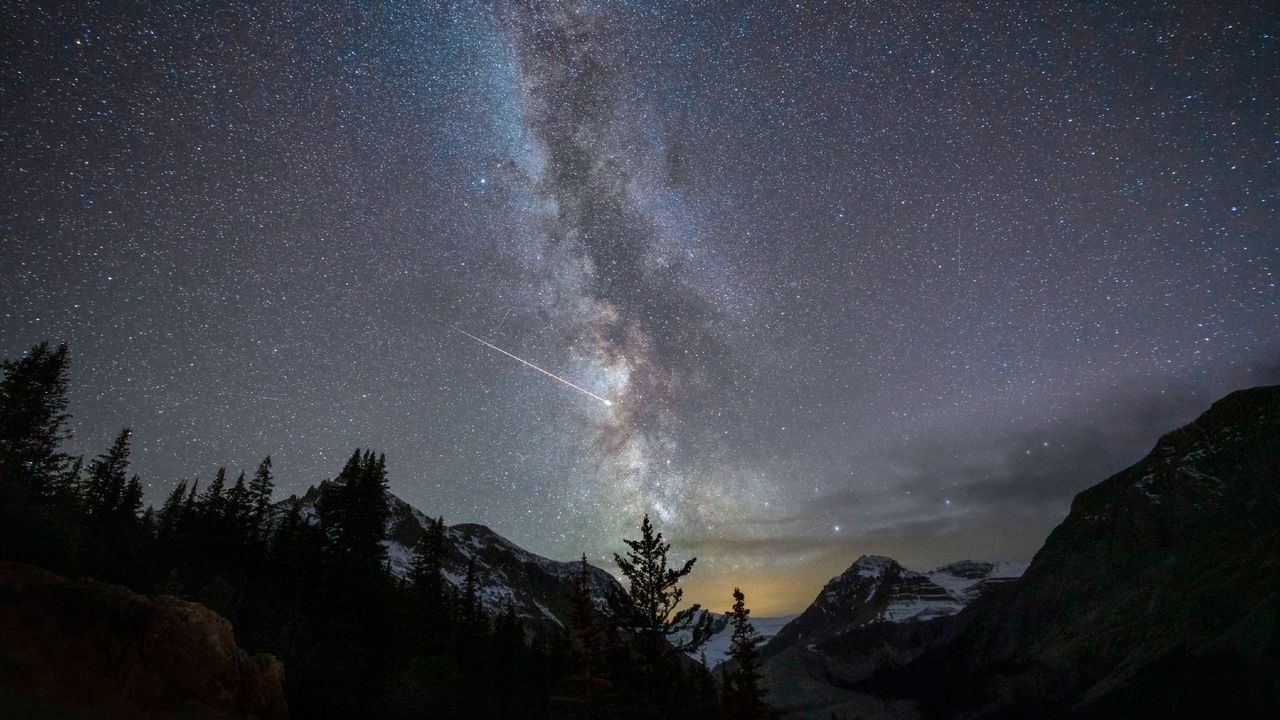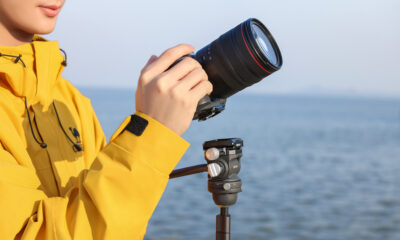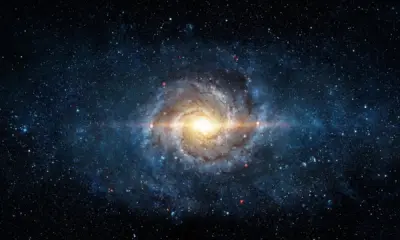Science
Discover the Top 10 Stargazing Locations Across North America

Stargazers looking for breathtaking views of the night sky need to venture beyond urban areas, where light pollution obscures celestial wonders. In North America, only about 20% of the population can witness the stunning beauty of the Milky Way due to the overwhelming presence of artificial light. Fortunately, there are numerous locations that offer some of the darkest skies in the region, ideal for astronomy enthusiasts and casual observers alike.
The darkness of the skies is measured using the Bortle scale, which ranges from 1 to 9, with 1 representing the darkest sky conditions. For those seeking the best stargazing experiences, locations classified under Bortle 1 to 2 are prime choices. Here are ten of the finest stargazing spots in North America, perfect for capturing the beauty of the cosmos.
Natural Bridges National Monument, Utah
Located in Utah, the Natural Bridges National Monument boasts a sky quality classified as Bortle 2. Established as the first designated Dark Sky Park in 2007, this park covers a small yet enchanting landscape. It features three sandstone arches—Kachina, Sipapu, and Owachomo—where visitors can see the Milky Way illuminating the night sky. The park is particularly appealing to astrophotographers and offers a sense of timelessness with ancient cliff dwellings nearby.
Cherry Springs State Park, Pennsylvania
On the East Coast, Cherry Springs State Park stands out as one of the few places for stargazers to experience truly dark skies. Positioned on a high plateau in northern Pennsylvania, this park features a dedicated astronomy observation field at an elevation of 2,300 feet (700 meters). Visitors can enjoy a panoramic view of the night sky and participate in the annual Black Forest Star Party each September, celebrating the wonders of the universe.
Jasper National Park, Alberta
In Canada, Jasper National Park is renowned among amateur astronomers for its stunning dark skies, classified as Bortle 2. The park hosts the Jasper Dark Sky Festival every October, drawing in stargazers from across the globe. Although the recent 2024 wildfire impacted some areas, Jasper remains a popular destination for those eager to explore the cosmos.
Chaco Culture National Historical Park, New Mexico
A UNESCO World Heritage Site, Chaco Culture National Historical Park offers visitors a glimpse into the astronomical prowess of the ancestral Puebloans. This park, classified as Bortle 1-2, features structures aligned with celestial events. Although the scenic loop drive is closed at night, the park provides opportunities for astrophotography and hosts public telescope nights, allowing visitors to engage with the night sky.
Black Mesa State Park, Oklahoma
In northwest Oklahoma, Black Mesa State Park is home to some of the darkest skies in the United States, classified as Bortle 1. The park, encompassing 1,600 acres (650 hectares), is situated near the borders of New Mexico and Colorado. It attracts stargazers during the annual Perseid meteor shower and hosts the Okie-Tex Star Party every September.
Voyageurs National Park, Minnesota
For those seeking reflections of the night sky in water, Voyageurs National Park in Minnesota is an ideal location. With a sky quality rating of Bortle 2, this park’s remote wilderness comprises a stunning maze of lakes and islands. The park hosts the Voyageurs Star Party in August, featuring ranger-led telescope programs, while the best chances to witness the northern lights occur from September to March.
Big Bend National Park, Texas
Renowned for its breathtaking vistas, Big Bend National Park offers Bortle 1 night skies and is part of the Greater Big Bend International Dark Sky Reserve. This park, characterized by minimal light pollution, is a top destination for stargazers. The park’s rugged terrain also hosts the McDonald Observatory, where visitors can engage with telescopes for a closer look at the stars.
Grasslands National Park, Saskatchewan
Covering 281 square miles (729 square kilometers), Grasslands National Park in Saskatchewan stands as a Dark Sky Preserve since 2009. Its expansive prairie badlands provide excellent opportunities for stargazing, especially during the park’s annual dark sky festival every May.
Crater Lake National Park, Oregon
Located in Oregon, Crater Lake National Park features Bortle 1 night skies due to its elevation of 6,178 feet (1,883 meters). The park’s unique geography, a caldera formed by a collapsed volcano, allows for clear views of the night sky. Visitors can often see the Milky Way reflected in the lake’s waters, particularly from the northern side of Rim Road.
Waterton-Glacier International Peace Park, Montana and Alberta
Finally, the Waterton-Glacier International Peace Park, a combination of Glacier National Park in Montana and Waterton Lakes National Park in Alberta, offers stunning landscapes perfect for stargazing. The park hosts astronomy programs and Logan Pass Star Parties during the summer months, providing a magical backdrop for those eager to explore the night sky.
Each of these locations showcases the best of what North America has to offer for those looking to escape the bright lights of urban life. With careful planning around lunar phases and weather conditions, stargazers can immerse themselves in the wonders of the universe.
-

 Technology4 months ago
Technology4 months agoDiscover the Top 10 Calorie Counting Apps of 2025
-

 Health2 months ago
Health2 months agoBella Hadid Shares Health Update After Treatment for Lyme Disease
-

 Health3 months ago
Health3 months agoErin Bates Shares Recovery Update Following Sepsis Complications
-

 Technology3 weeks ago
Technology3 weeks agoDiscover 2025’s Top GPUs for Exceptional 4K Gaming Performance
-

 Technology2 months ago
Technology2 months agoElectric Moto Influencer Surronster Arrested in Tijuana
-

 Technology4 months ago
Technology4 months agoDiscover How to Reverse Image Search Using ChatGPT Effortlessly
-

 Technology4 months ago
Technology4 months agoMeta Initiates $60B AI Data Center Expansion, Starting in Ohio
-

 Technology4 months ago
Technology4 months agoRecovering a Suspended TikTok Account: A Step-by-Step Guide
-

 Health4 months ago
Health4 months agoTested: Rab Firewall Mountain Jacket Survives Harsh Conditions
-

 Lifestyle4 months ago
Lifestyle4 months agoBelton Family Reunites After Daughter Survives Hill Country Floods
-

 Technology3 months ago
Technology3 months agoUncovering the Top Five Most Challenging Motorcycles to Ride
-

 Technology4 weeks ago
Technology4 weeks agoDiscover the Best Wireless Earbuds for Every Lifestyle





















